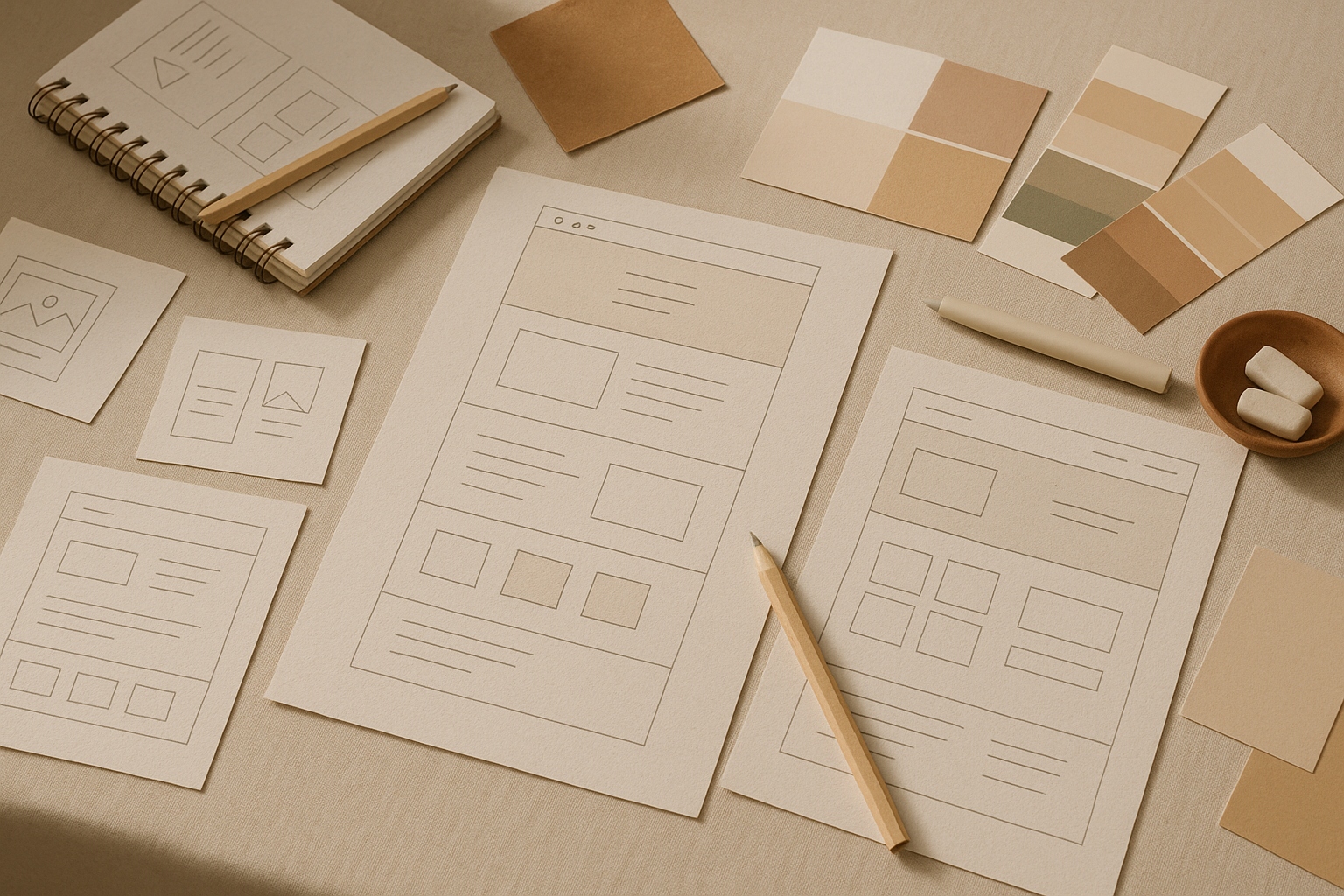How Often Should You Redesign Your Website?
There’s no hard rule for how often a website needs to be redesigned — but “set it and forget it” is rarely a good strategy. A website isn’t just a digital brochure anymore. It’s your storefront, portfolio, sales team, and introduction — all rolled into one. When it’s out of sync with your business, it doesn’t just look off. It creates confusion, slows down growth, and costs you opportunities.
So, how often should a website be redesigned? My answer: about once a year — or anytime your business goes through a major shift in focus, audience, or strategy. That doesn’t mean a full overhaul every twelve months. But it does mean taking a close look at what’s working, what isn’t, and whether your site still reflects where your business is right now, not where it was when the site first launched.
What Counts as a “Redesign”?
A redesign doesn’t have to mean scrapping everything and starting over. Sometimes it’s a full rebrand with new fonts, colors, messaging, and structure. Other times, it’s simply updating your homepage, swapping in fresh photos, refining your service pages, or reworking your calls-to-action. This can be:
Visual (new fonts, layout, or aesthetic)
Structural (better navigation, simpler page flows)
Strategic (rewriting your copy to match a new offer or audience)
Functional (adding booking tools, forms, or new content types)
If the design still looks good but your site no longer fits the way you work or talk about your business, it might be time for a strategic update, even without a full visual change.
Signs It’s Time for a Redesign
Here are a few things that might signal it’s time to revisit your website:
Your business has shifted focus
Maybe you’ve changed your services, redefined your target audience, or adjusted your pricing. If your site still reflects an old version of what you do — or attracts the wrong kind of leads — it's time for a redesign.
Your site feels “off”
If your site no longer feels aligned with your brand, or you cringe when sending the link, that’s usually a good sign it needs work. A site that once felt current can start to feel dated surprisingly fast.
It’s hard to update
If you avoid updating your site because it’s confusing, clunky, or reliant on a designer or developer for every small change, that’s more than a technical issue — it’s a barrier to growth. A redesign can streamline the backend so it’s easier to manage in-house.
Traffic or engagement is down
If fewer people are visiting your site, staying on your pages, or converting into inquiries or sales, the issue may be visual, functional, or both. A redesign can help clarify your message, improve load times, or offer a better experience across devices.
You’ve updated everything else, but not your website
If your brand has evolved on social media, in print, or through new offerings, but your website still looks like it did three years ago, the disconnect can confuse clients. Your website should reflect the best, most current version of your business.
The Case for Checking In Every Year
Even if there hasn’t been a major shift, it’s worth reviewing your site at least once a year. Think of it like getting your car serviced — you don’t wait for the engine to fail before getting an oil change. Once a year, ask:
Are my core services still accurate?
Does the imagery still reflect my current brand?
Are there pages that feel underdeveloped or outdated?
Have I added anything new to my business that isn’t represented on the site?
Does the homepage speak to the clients I want now, not just the ones I used to serve?
Sometimes a light refresh — a few updated photos, tighter headlines, or simplified navigation — can go a long way.
How Long Does a Website Actually “Last”?
It depends on how fast your business is evolving and how flexible your website is. Here’s a general guide:
1–2 years: Fast-growing businesses may need to make noticeable changes every year, especially if services, pricing, or client focus shifts.
2–3 years: If the core of the business stays steady but trends shift visually or strategically, this is often when a full redesign becomes helpful.
3–5 years: At this point, even well-built sites often need more than a refresh. Design norms, mobile expectations, and tech tools evolve quickly. A site that hasn’t been touched in five years almost always feels out of sync.
The more often a business evolves, the more often its site needs to adapt.
It’s Not Just About Design — It’s About Strategy
A redesign is the perfect opportunity to revisit not just how your site looks, but how it works. That includes:
Clarifying your messaging
Making sure your services are easy to understand and act on
Improving the mobile experience
Adding tools like online booking, chat, or lead capture
Updating testimonials, case studies, or blog content
The goal isn’t just a prettier site — it’s a more effective one.
What If I’m Not Ready for a Full Redesign?
That’s totally fine. In fact, most of the time, a few focused updates can extend the life of your site and keep things feeling fresh. If a full redesign isn’t in the cards, consider:
Updating your homepage hero text and imagery
Rewriting your About page with more personality
Swapping out portfolio pieces or testimonials
Adding an FAQ or service explainer
Checking your mobile formatting and fixing anything misaligned
Small tweaks can have a big impact, especially if the bones of the site are still strong.
Final Thoughts
A website is never really “done.” It should evolve as the business grows, goals shift, and offerings change. That doesn’t mean a full rebrand every year — but it does mean treating your site like a living part of your business, not a one-time project.

